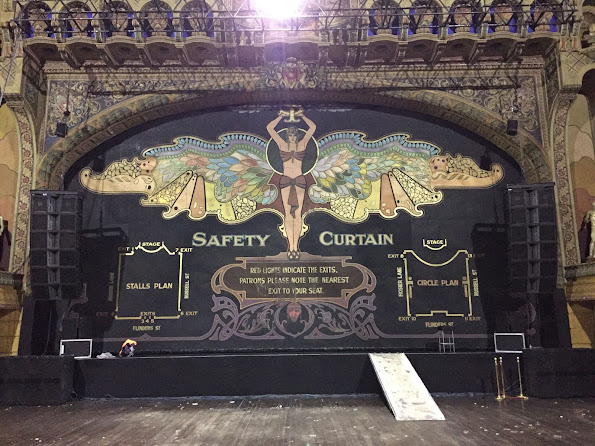Ordinary Lady Survives Auschwitz
What's the Opposite of Vertigo?
In 1975, film theorist Laura Mulvey published her landmark essay, Visual Pleasure in Narrative Cinema, in which she argues that the very act of watching a film is inherently masculine. The pleasure an audience derives from watching characters on a screen (she asserts) is a voyeuristic pleasure that turns those characters (female characters in particular) into objects for our satisfaction. It was this paper that was to popularise the term "Male Gaze".
In backing up her idea, Laura Mulvey cited several films that are essentially built around the notion of voyeurism; most of them directed by Alfred Hitchcock (which possibly tells you more about Hitchcock than it tells you about cinema in general). Chief among those films was his 1958 masterpiece Vertigo.
Much has been written about Vertigo over the decades, and I am not about to get drawn into all of that right now. For our current purposes, Vertigo tells the story of a retired detective who suffers from crippling vertigo, but who is hired to follow the wife of an old school friend. After watching her (initially from a distance, but eventually much closer) he becomes increasingly obsessed with her, and is emotionally destroyed when she jumps to her death from the bell tower of an old church (his vertigo had prevented him from following her up, so he was forced to watch helplessly from below).
Some time later, he encounters a young woman who seems to resemble her, and he obsessively sets about transforming her into an exact replica of his dead love (obsession is a major theme in this film). What he does not know is that both women are the same woman; the suicide had been staged for various reasons, and he is transforming her back into the part she had been playing all along. (Sorry for all the spoilers!)
Vertigo is a perfect illustration of Laura Mulvey's thesis about the male gaze, not least because the film is basically all about him, and his obsession. Kim Novak plays two characters (who turn out to be the same character) but they are the objects of his gaze: they are there for his visual pleasure. When he meets Judy in the latter part of the film, he promptly sets about "re-packaging" her in an attempt to create the persona of the woman he had desired and lost.
As John Berger put it in his legendary art programme Ways of Seeing, "Men look at women. Women look at themselves being looked at."
Our next film takes the basic idea of Vertigo and effectively reverses it.
Phoenix tells the story of Nelly, a Holocaust survivor who returns to Berlin after the war to search for her former husband. He assumes that she had died in the Camps, so when they meet, he decides to hire her to play the part of his (supposedly) dead wife in order to collect her inheritance. Like Judy in Vertigo, Nelly finds herself being asked to impersonate herself. Unlike Vertigo, this is her story, not his, and she is not the passive object of a man's gaze.
Phoenix and I Was a Male War Bride both take place in post-war Germany, but they exist in different realities. America was determined to make Soviet Russia the enemy of the post World War II world, so the German people were "rehabilitated" in popular culture almost as soon as the Nazis had been defeated. Phoenix presents a post-war Berlin as seen through the eyes of someone who had lived through the Holocaust.
This is not a Germany filled with kindly inn-keepers and noble lens-grinders; this is a corrupt and seedy nether-world of people who have done whatever was necessary to survive. It is also a world in which Nelly must learn how to "perform" her old pre-war persona for the benefit of her husband and his agenda.
We will be screening Phoenix at 7.30 on Thursday, the 6th of October, at the Victoria Park Baptist Church.










Comments
Post a Comment